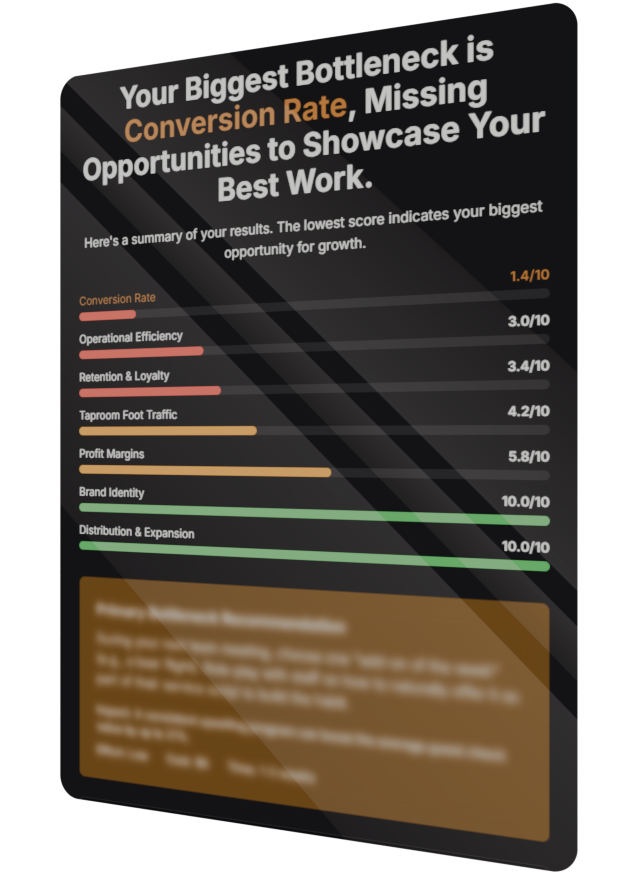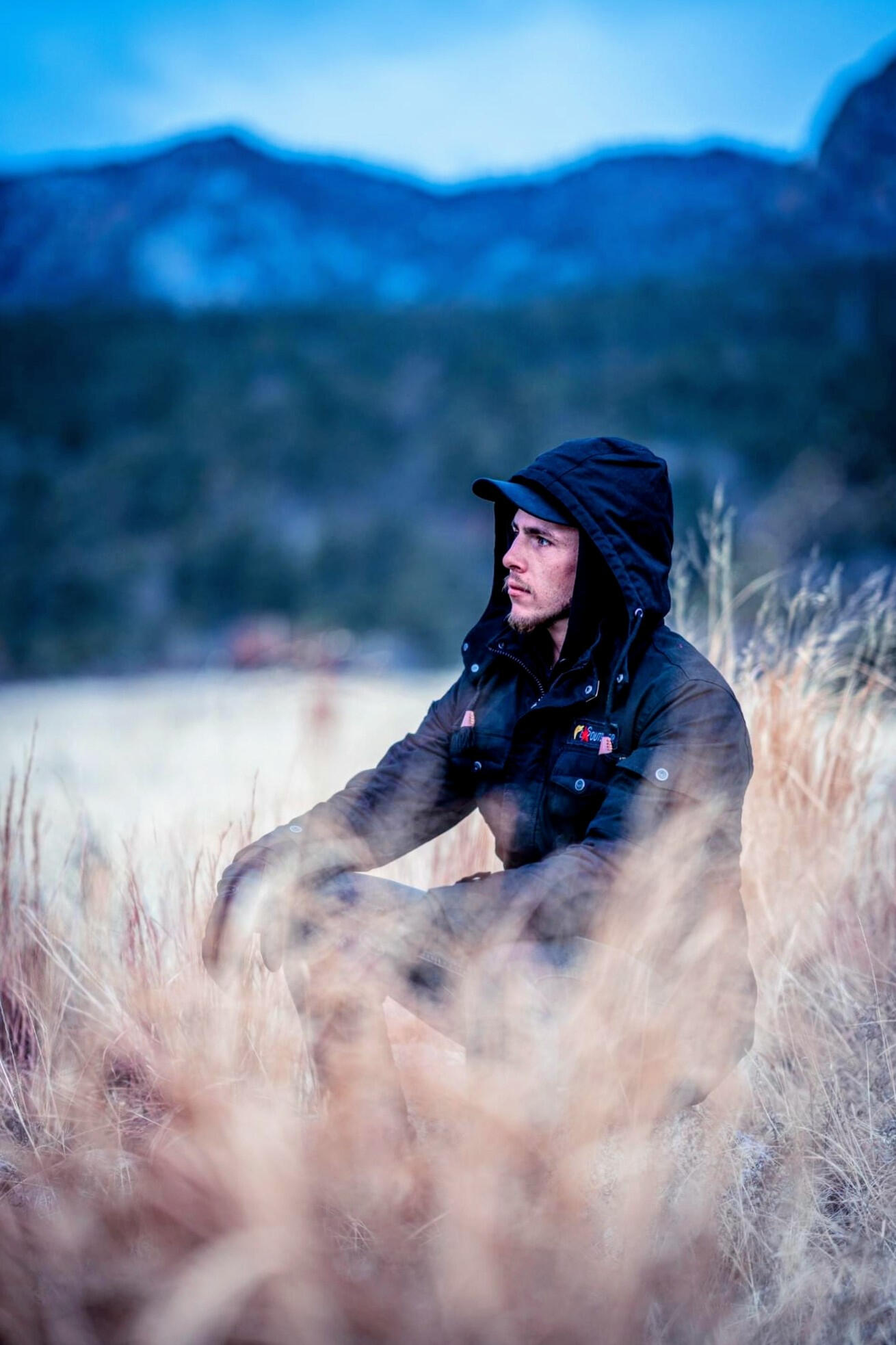
Your brewery’s biggest growth opportunity is hiding in your blind spot.
After studying hundreds of small breweries, I built a simple diagnostic tool to find what most owners miss. This quiz pinpoints the one area—like menu design, margins, or marketing—that can unlock your next phase of growth.
Takes 7-10 minutes. No signup required.

Discover Your Brewery’s #1 Growth Bottleneck
Ten minutes to clarity. Get a personalized snapshot of where revenue is leaking and the first move to fix it.

Diagnose
Pinpoint the core constraint across traffic, conversion, retention, margins, ops, brand, or distribution.

Benchmark
See how your numbers stack up to U.S. peers and top performers so you know what “good” looks like.

Action Step
Get the first, lowest-effort move to unlock growth—no fluff, no generic advice.
Find Out What's Holding You Back!
Fix One Thing First
It’s easy to fall into the pitfall of trying to solve everything at once.
But as Alex Hormozi and other growth strategists emphasize, the fastest path to lasting change is to pick one bottleneck, focus on it relentlessly, and move the needle there before tackling the next.
Pick the bottleneck: Use the quiz score: lowest‑scoring category = your focus.90‑day sprint: One KPI, one owner, weekly check‑ins. If it doesn’t move the KPI, it’s noise.Sequence, don’t stack: Traffic → Conversion → Retention → Margins → Ops → Brand → Distribution.
Built on Real Data, Not Guesswork
Every benchmark in your quiz is grounded in proven research from the leading voices in craft brewing, hospitality, and consumer behavior.

Industry & Trade Associations
Brewers Association → profit margins, revenue mixNBWA → distribution & wholesaler realities

Brewery & Hospitality Software
Brewers Association → profit margins, revenue mixNBWA → distribution & wholesaler realities

Market Research & Consulting
NielsenIQ → packaging & retail consumer behaviorGallup → team engagement impactBrightLocal → power of Google reviews

Industry Media
Craft Beer & Brewing → pour cost & mug clubsBrewbound → distributor strategies
About
Hi, I’m Joe Bennett.I’m a husband and dad to three amazing kids. For the past 7 years, I’ve worked a blue-collar job to support my family. At night, I’ve studied marketing, design, and business strategy with one goal in mind: helping small breweries grow.At first, I thought the answer was rebrands. But here’s what I found:
- Most breweries rebrand every 5 years, and the sales bump usually lasts only a few months.
- Sometimes it works (see Voodoo Ranger).
- Other times it barely helps, or even hurts (see Anchor Brewing, who rebranded, grew production 45%, but still closed within 2 years).That made me ask: what really drives lasting growth for breweries?The truth is, there isn’t a one-size-fits-all fix. But almost every brewery has one key bottleneck holding them back. Solve that, and you unlock the next wave of growth.That’s why I built this quiz.---Why This is Free
Right now, I’m proving this system in the real world. That means:
- Everything is 100% free. The quiz, the results, and my help.
- You’re not a “lead.” You’re helping shape a tool made for breweries like yours.
- If you’d like extra help putting your results into action or tailoring them to your brewery, I’d love to work with you, at no charge.---Breweries give communities life. If this quiz sparks even one useful idea for your taproom, then it’s doing its job.---A Note on Outreach
If you found this site through a cold email, I get it: that can feel unusual. But I’m a real person, not an agency blasting spam.I’m reaching out one by one to small breweries producing under 15,000 barrels a year, because that’s who this quiz is built for. If you don’t fit that, or if you’d rather not hear from me again, just reply “not interested” to the email and I’ll take you off my list right away.I’m building this tool brewery by brewery, and I’d be grateful for your feedback along the way.

Let’s Put It Into Practice
You’ve got your results — now let’s turn them into action.
If you’d like a deeper dive into your specific situation and a clear, focused plan for fixing your biggest constraint, we’d love to help.
© ArchéFlo 2025 · All rights reserved